Sandblast Equipment
The term sandblast equipment, or blaster/machinery, refers to a wide range of tools and machines designed to use sand or similar materials to clean or resurface industrial products and components. These machines facilitate the process of sandblasting, also known as blast cleaning.
Sandblasting is an abrasive blasting process in which materials are propelled at high pressure and high speed to smooth rough surfaces. Although "sandblasting" is commonly used as a blanket term for all media blasting processes, it technically applies only to blasting operations that utilize sandblasters and silica blasting media.
The History of Sandblast Equipment
The earliest abrasive blast equipment was invented in 1870 by Benjamin Tilghman, who developed the blaster to remove paint and rust from old parts before repurposing them.
In 1893, the invention of air processors enhanced abrasive blasting, and in 1904, Thomas Pangborn revolutionized the process by incorporating compressed air and sand. Over time, concerns arose about the dangers of sandblast inhalation, which could cause the lung disease silicosis. To address this, engineers in 1918 began designing enclosures that shielded workers from abrasive blast media while allowing them to monitor the process through a viewing screen. Later advancements introduced protective components such as safety clothing, air filters, and dust collectors to further improve worker safety.
Since 1939, manufacturers have experimented with a variety of alternative abrasive blast media, including crushed walnut shells and glass beads. To this day, they continue to seek safer and more sustainable blasting technologies.
Advantages and Benefits of Sandblasting
Sustainability
Advancements in residual blast media collection enable the recycling and reuse of particles, reducing material costs and minimizing environmental impact. Additionally, using organic blast media such as crushed walnut shells, ground corn cobs, and baking soda helps preserve air quality, prevent pollution, and reduce water contamination in outdoor blasting projects.
Speed and Efficiency
Sandblast equipment is both simple and powerful, allowing projects to be completed quickly and efficiently.
Cost-Effectiveness
Since blast equipment is straightforward, it is relatively inexpensive. The required materials are widely available and affordable, and because blast media can often be recycled, the overall process remains cost-effective.
Versatility
Sandblast equipment is useful for a wide range of surface treatments, including coating removal, smoothing, roughening, etching, carving, degreasing, deburring, deflashing, and descaling.
How Sandblasting Works
Sandblasting equipment operates by combining high pressure, abrasive media, and sometimes water to clean or smooth surfaces. Essentially, it functions like an accelerated erosion process.
The equipment creates this scrubbing effect by propelling abrasive material onto the surface. The blasting media can vary in abrasiveness, from highly abrasive materials like fine glass beads to milder options like sand. All sandblasters use either compressed air or pressurized water to deliver the media, typically through a nozzle gun.
Sandblaster Images, Diagrams and Visual Concepts
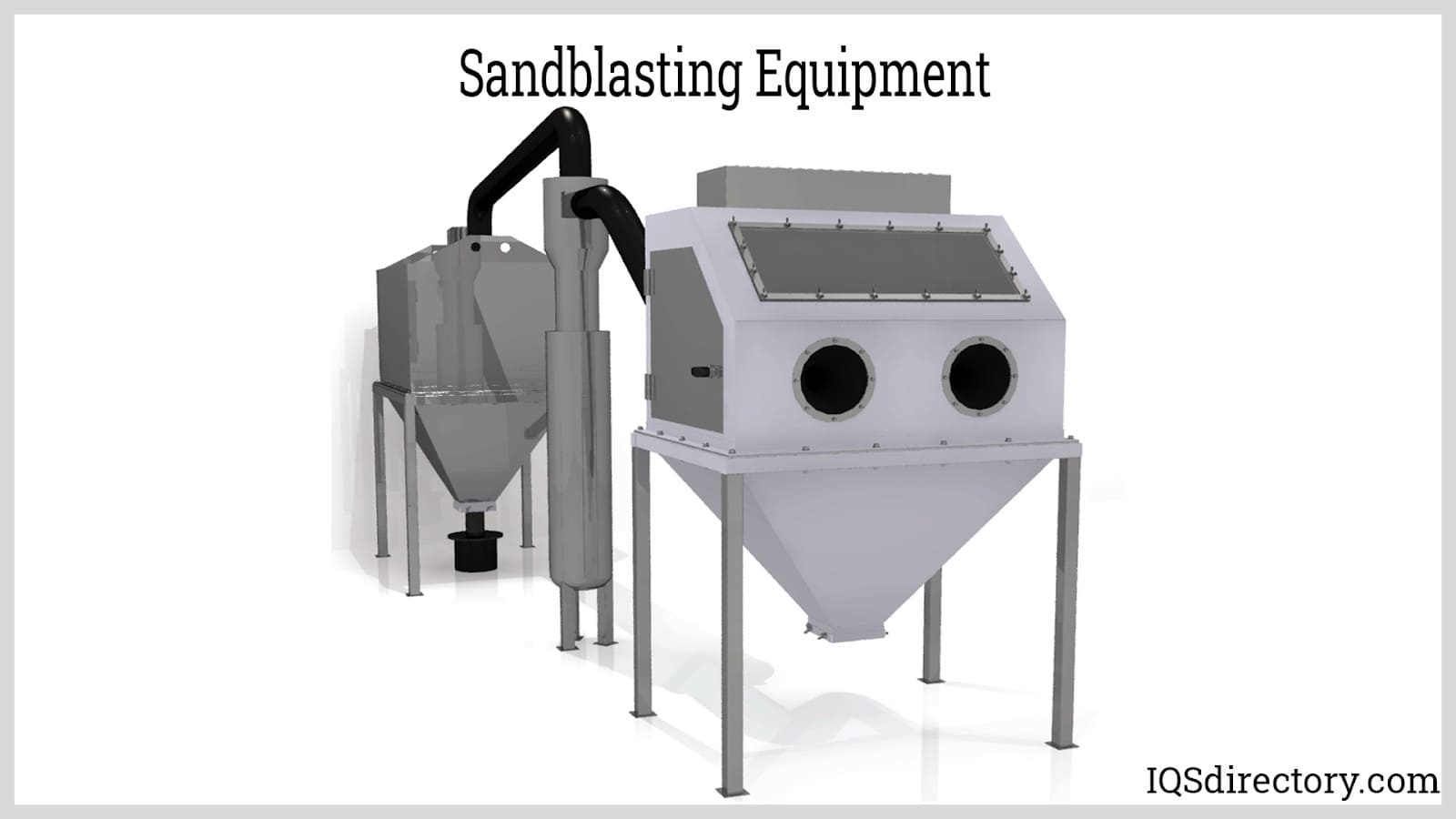 Sandblasting equipment includes systems or machinery, and components for projecting blast media against a part‘s surface to abrade, clean, or modify the surface.
Sandblasting equipment includes systems or machinery, and components for projecting blast media against a part‘s surface to abrade, clean, or modify the surface.
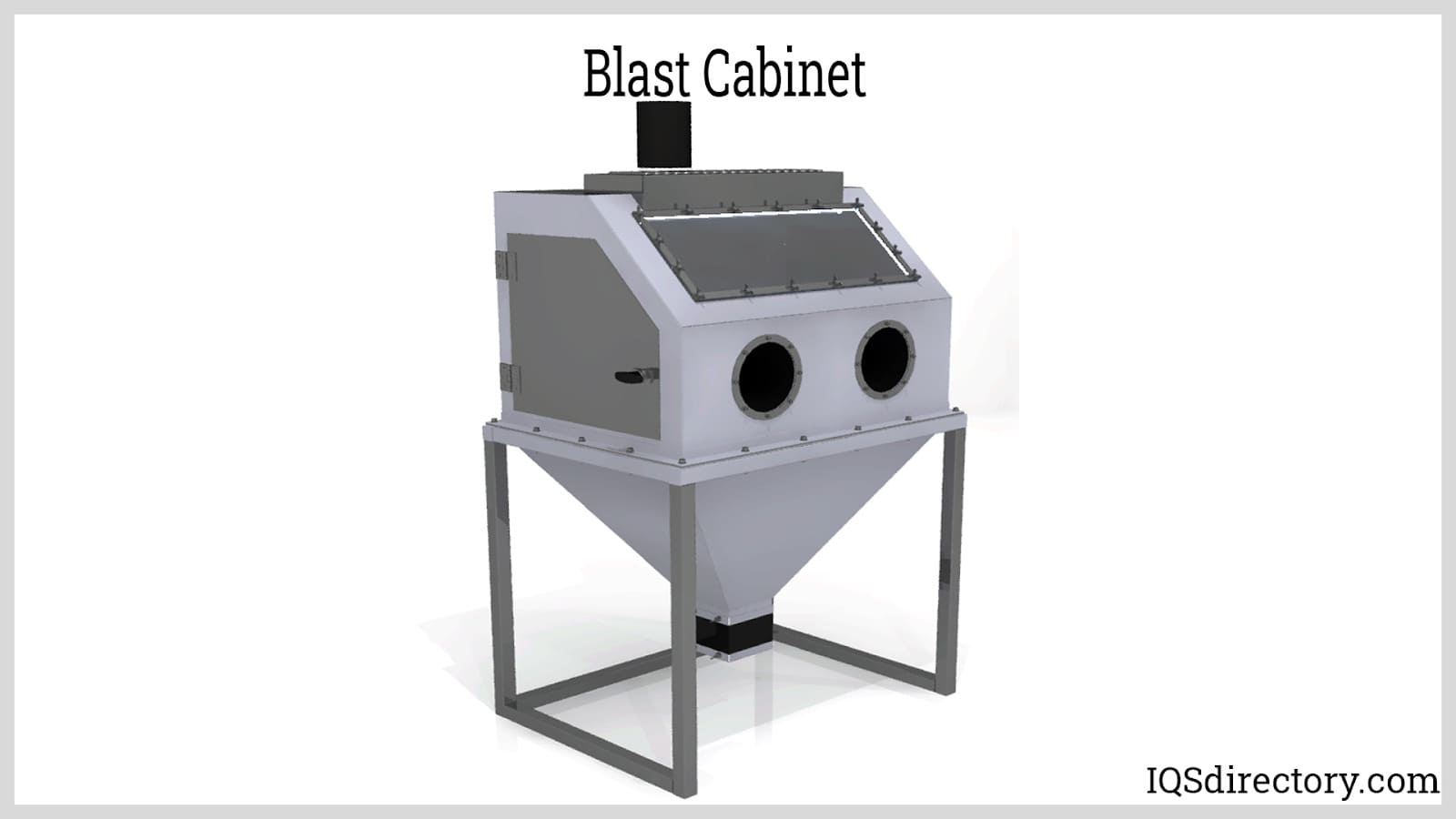 An example of manual blast cabinet.
An example of manual blast cabinet.
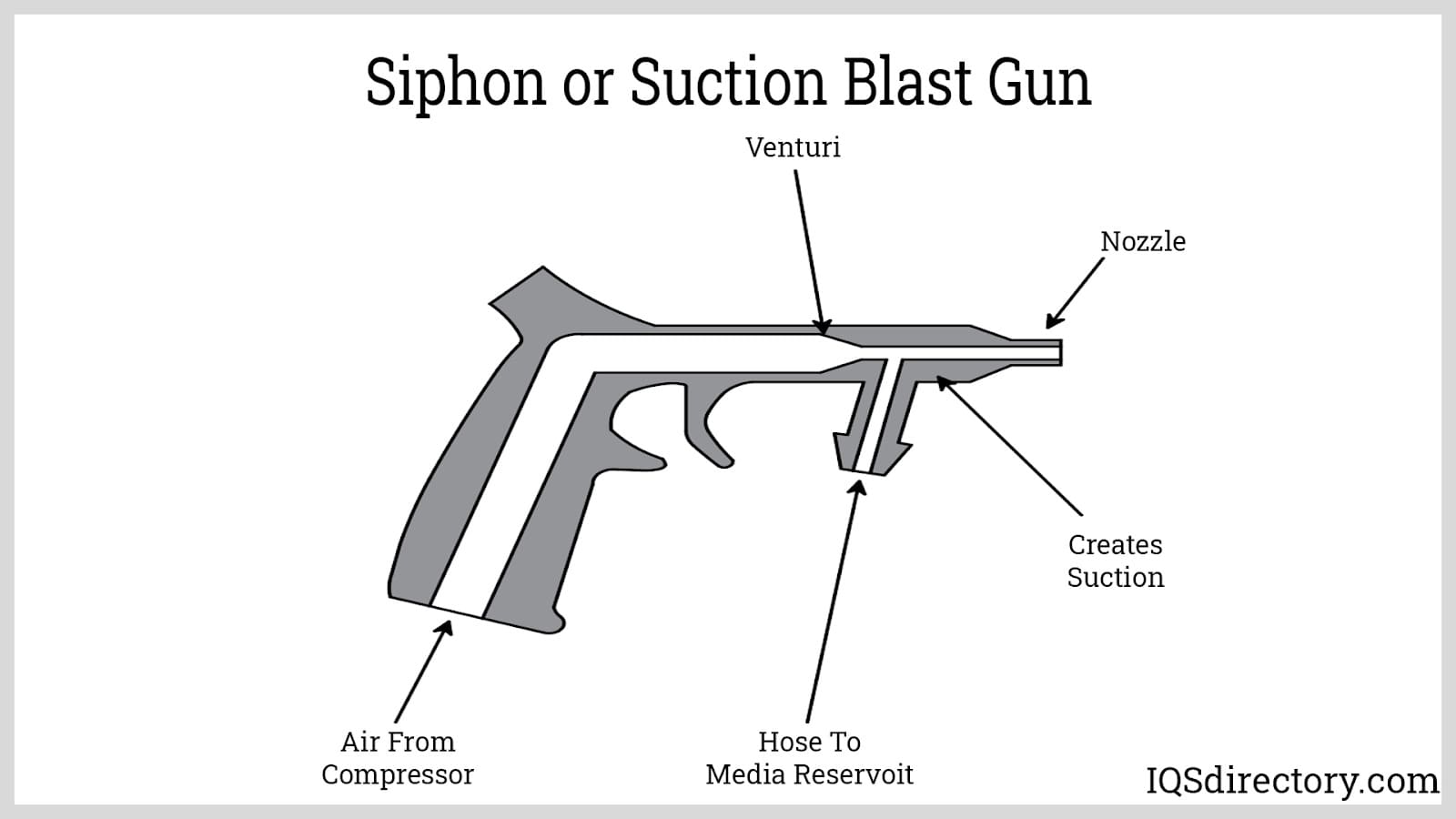 An example of a blast gun tool.
An example of a blast gun tool.
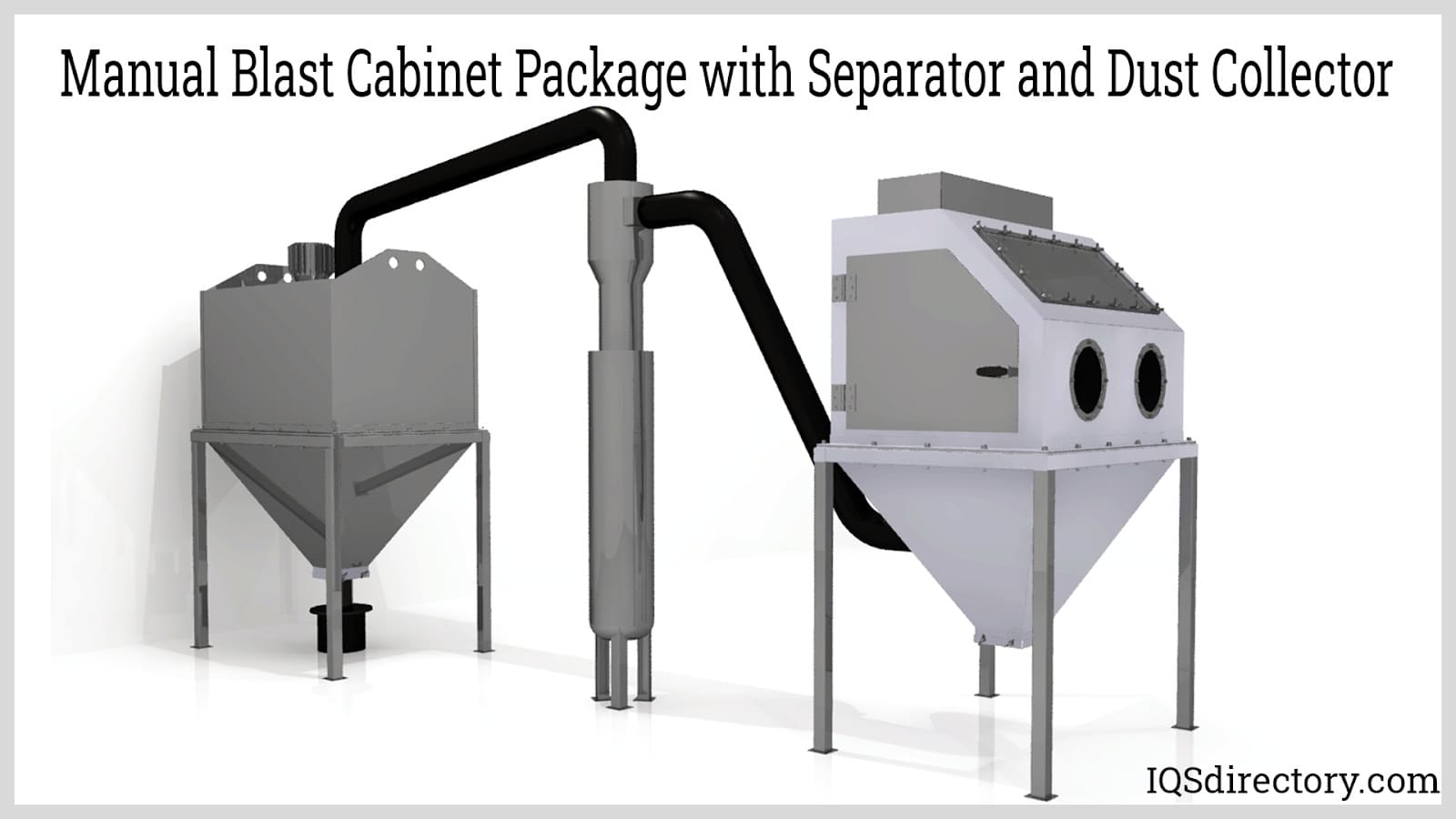 An example of manual blast cabinet package, which includes a a blast cabinet, separator, and dust collector.
An example of manual blast cabinet package, which includes a a blast cabinet, separator, and dust collector.
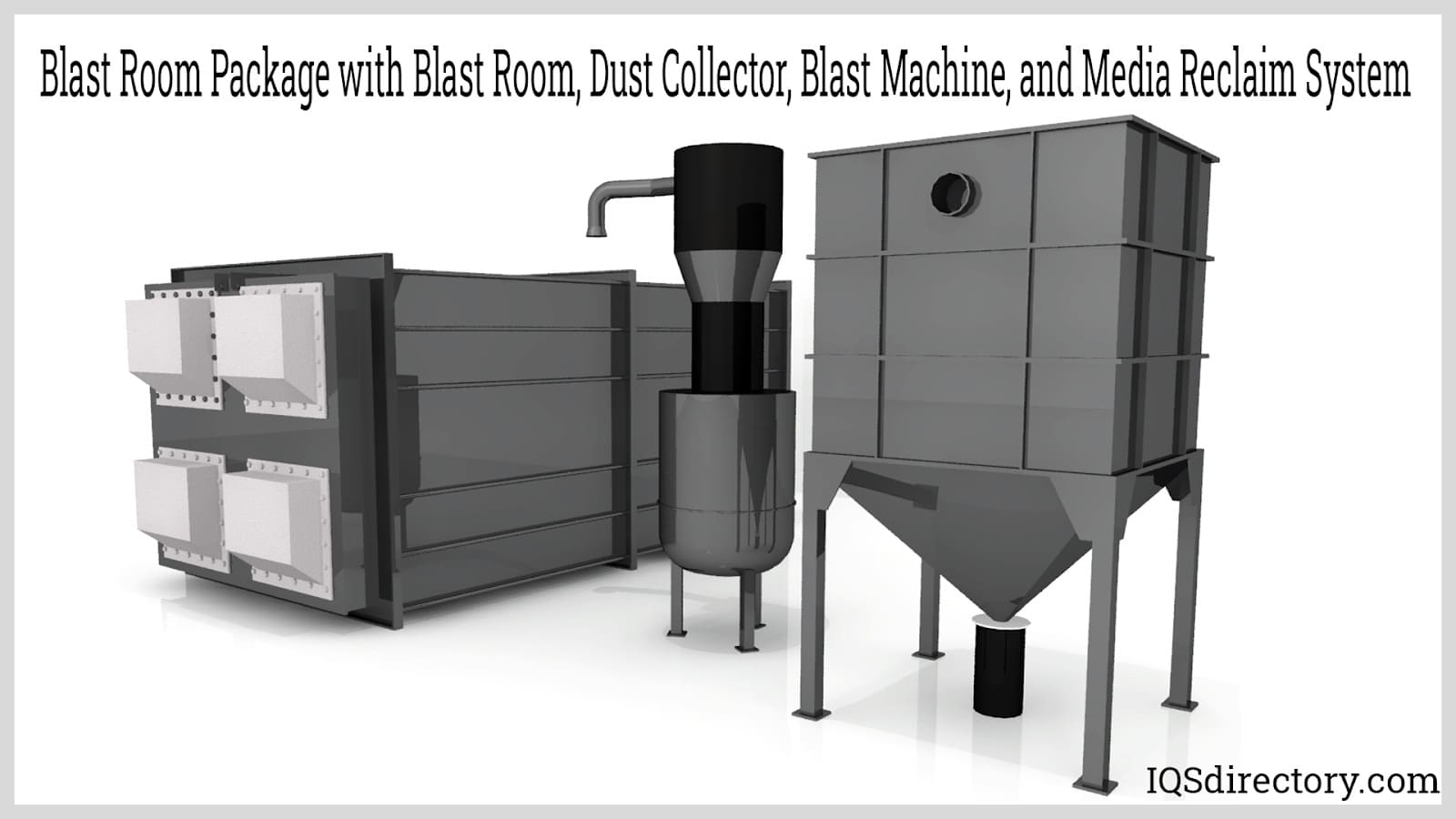 An example of a blast room equipment.
An example of a blast room equipment.
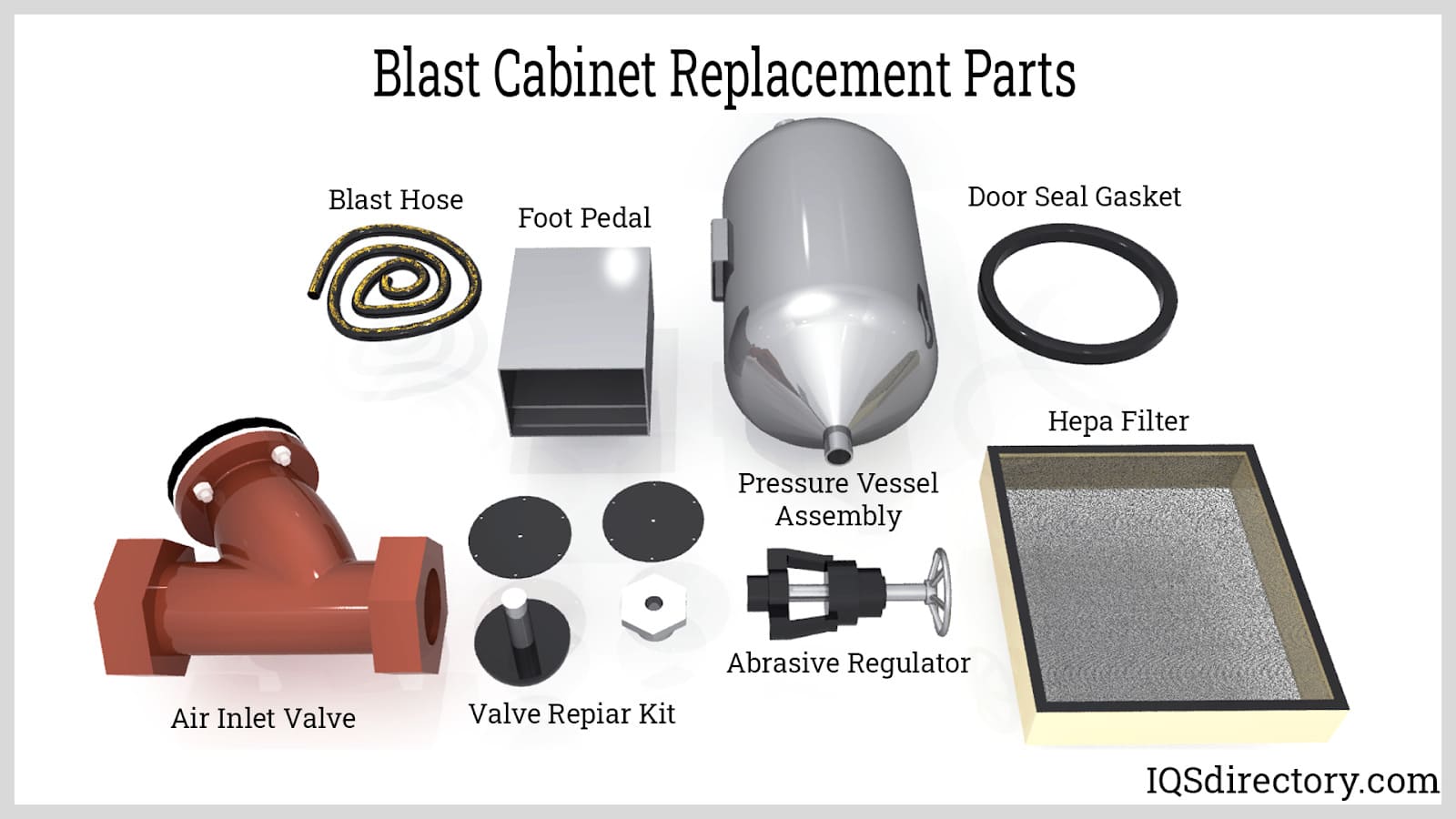 These parts are the most common parts in a blast cabinet that need to be replaced.
These parts are the most common parts in a blast cabinet that need to be replaced.
Types of Sandblasters
Automated Blasting Machines
Allow for the large-scale treatment of small parts and products. Consider how one of these could be used to benefit your company. Automated blasting systems remove contaminants, coatings, and debris from parts in a manner similar to batch processing or conveyor-type systems.
Bead Blasters
Utilize high-pressure streams of spherical abrasives to clean or resurface parts and components in industrial, commercial, and domestic settings.
Sandblast Cabinets
Similar to automated blasting machines, sandblast cabinets allow for large-scale treatment of small parts. These enclosures contain items to be abraded and help prevent the exposure of blasting media to surrounding workers.
Portable Sand Blasters
Can be taken from one worksite to another, making single treatments of large surfaces possible. Portable sandblasters are mobile machines of varying sizes and designs that utilize high-pressure streams of abrasive materials to clean or resurface parts and components.
Blast Rooms
Are larger versions of sandblast cabinets. A typical blast room consists of three main components: a containment structure, an abrasive blast system, and a dust collector. If additional dust cleanup is needed, you can check out the systems for dust removal IQS lists here. It’s quite common for a blast room to have one or more recycling systems.
Gravity-fed Sandblasters
Use gravity to remove discoloration or dirt from parts’ surfaces. With this type of blaster, media is directed into the barrel of the gun from the top. A hopper at the top holds the supply of media as you work. When the device is pressed, air and media blast out of the nozzle at high speed. Gravity-fed systems use gravity to direct abrasives into the compressed air stream.
Siphon Sandblasters
Function similarly to gravity-fed sandblasters but differ in container design. Instead of being placed above the nozzle, the container holding the media is below it. Siphon systems use suction to draw abrasives into the compressed air stream, making them a relatively cost-effective option, as sand can be recollected into the reservoir.
Pressure Sandblasters
Use canisters or vessels, to which a gun is hooked up. Out of this gun or hose, wet sand is blasted. The pressure pot system is identical to the siphon system, except that its abrasive store is negatively pressurized to allow for a more efficient combination of air and abrasive. Pressure blasters are easier to use compared to other types. The treatment of metallic parts requires one of two types of blasting machines: wet sandblasters or dry sandblasters.
Wet Sandblasters
Are driven by pressurized water, while dry sandblasters use compressed air. Wet sandblasting is ideal for the surface treatment of parts that require cooling during blasting. This prevents surface deterioration and maintains the aesthetic value of the material.
Dry Sandblasters
Release sand at high velocity onto surfaces to smooth them. This method accounts for most surface treatments across various materials, parts, and products.
Bead Blasters
Remove paint or surface deposits by propelling a stream of fine glass beads at high pressure. This type of blasting is not recommended for small parts but is widely used for treating automobile bodies. It is also popular for cleaning calcium deposits and embedded fungus on pool tiles or similar surfaces.
Shot Blasters
Use coarser metals as media for cleaning or polishing metal surfaces. Shot blasting releases sparks or light, called shot blasts, upon impact. The color of a shot blast depends on the selected media. Shot blasting uses two technologies: wheel blasting and air blasting. Shot blasters are machines that propel shot at high speed toward an intended surface to remove paint, debris, and buildup.
Wheel Blast Machines
Convert electrical energy into kinetic energy to propel abrasives onto coarse surfaces. This method is ideal for treating large machines or parts with expansive surface areas.
Air Blast Machines
Are powered by compressed air, which propels metals through nozzles onto a component.
Grit Blasters
Use various particles like soft walnut shells, sand, silicon carbide, alumina, or emery, depending on the application. These particles are propelled using compressed air, pressurized water, or steam. Grit blasters vary in size and design and utilize high-pressure streams of abrasive materials and slurries to clean or resurface industrial parts, products, and components. They are commonly used to remove sand and scale in castings and prepare metallic surfaces before welding. Grit blasting also improves coating adhesion and gives surfaces a smooth finish.
Media Blasting
A process that removes coatings from metal, wood, fiberglass, and other substrates using pressurized streams of abrasive materials.
Micro-Blasting
Also known as micro-jet machines, these specialized machines are used for applications requiring selective surface preparation, material removal, and finishing.
Sandblast Media
Refers to the variable abrasive materials used in sandblasting equipment to remove coatings and unwanted debris from metal, wood, plastic, and glass industrial components.
Shot Peening Equipment
Used to mechanically and cosmetically modify the surface layer of metals.
Soda Blasters
Are a type of grit blaster that uses baking soda. A soda blast is a healthier alternative to silica blasting, which can have harmful effects when ingested. Soda blasting equipment is a specialized type of media blasting apparatus that uses pressurized streams of sodium bicarbonate to clean or resurface industrial parts, products, and components.
Sandblaster Equipment Components
Different sandblasters have different components. Below are a few of the more common ones, including blasting media, air compressors, nozzles, blast hoses, and pressurized water.
Blasting Media
In the sandblasting process, an abrasive media, such as sand, glass beads, or steel grit, is shot at high speed so that the surface of a hard material becomes smoother.
Silica Sand or Silicon Dioxide
Silicon dioxide is sand, which is a commonly used material for removing rust or dirt from surfaces. Sand is efficient in abrasive blasting because the particles are sharp, making the process easier.
Glass Bead
This medium is perfect for achieving a matte and satin finish. It consists of very fine particles that produce a much smoother and brighter finish on the object being sandblasted.
Aluminum Oxide
This media is much sharper than glass bead and stays sharp for a long time, making it ideal for paint removal and general cleaning.
Air Compressors
Dry machines use air compressors to generate a powerful stream that propels abrasives against surfaces.
Pressurized Water
Only a small minority of blasting projects use pressurized water. It is mainly used for the treatment of surfaces that need cooling during blasting.
Nozzles
Used to direct the blasting stream. The most common type of nozzle is the ceramic nozzle.
Blast Hoses
Used with a pressure blaster, the blast hose conveys media from a pressure vessel (where it is stored) into the blast nozzle. Note: The vessel and the blast hose are pressurized to the same level.
Dust Collector
Many types of abrasive blast equipment include a dust collector in their system. The dust collector captures a large portion of the dust produced during sandblasting. This is especially important when working with media that is hazardous to human health, such as silica sand. It is also useful for media reusing and recycling.
How to Use a Sandblaster
To use your sandblaster, begin by connecting the hose to the air tank and attaching the nozzle to the hose. Next, fill the vessel with the blasting media of your choice, ensuring that all pressure settings are properly matched and calibrated. Once everything is set, control the blast gun using your controls. In most cases, this involves pointing the gun and pulling the trigger manually. In some setups, you may need to signal for the trigger to pull via a remote control. Either way, this is the stage where the blasting process begins, smoothing the surface or creating an even finish on your product.
Applications of Sandblasting
Blast equipment is used to eliminate a wide range of imperfections from the surfaces of metal, wood, glass, or plastic products. Most commonly, it is employed to remove rust, paint, discoloration, corrosion, dirt, and dust. It is also frequently used as a surface preparation step before painting.
This equipment serves a broad range of industrial applications, including industrial cleaning and processing, automotive manufacturing and repair, marine, construction, agriculture, aerospace, decorative design, woodworking, and glassworking.
Within these industries, sandblast equipment is essential for finishing parts and products such as newly manufactured fasteners, engine components, tractors, watercraft, cars, aircraft, heat exchangers, bridges, building components, and printed circuit boards.
Design and Customization of Sandblasting Equipment
When manufacturers design a sandblast system, they take several key factors into account.
One important consideration is the size of the operation. Gravity-fed systems, especially when combined with portable blasters, are well-suited for small projects, offering flexibility and ease of use.
Another crucial factor is the type of media that will be paired with the sandblast machine.
Angular or Rounded Media
The choice between angular and rounded media depends on the intended application. Angular materials are used for deburring, descaling, paint and coating stripping, surface texturing, and cleaning. Rounded media can also be used for these applications, but they are particularly effective for strengthening metal surfaces through repeated, intense collisions with shot, which induces compressive stress.
Traditional or Organic Media
Manufacturers also decide between organic, plant-based media and more traditional options like aluminum oxide. Plant-based media, such as nut shells or fruit kernels, offer eco-friendly advantages, cost savings, reusability, and reduced health risks for users.
Equipment Customization
With these considerations in mind, manufacturers can design a custom blaster tailored to specific applications. Customizable features and accessories may include an outer case, a blast hood, a moisture separator, custom nozzle materials, remote control operation, and specialized hose configurations.
Standards and Specifications of Blasters
To ensure worker safety while using a blaster and to prevent long-term health risks, manufacturers must comply with strict safety standards. It is essential that they operate sandblast equipment in accordance with OSHA guidelines.
Manufacturers should incorporate key safety accessories, including blast hoods or helmets, hearing protection, protective clothing, and proper respiratory protection.
Simple modifications to blaster workspaces, such as the use of enclosed blasting cabinets, protective clothing, respirators, and effective ventilation systems, significantly improve safety conditions for workers handling silica blaster equipment.
Things to Consider When Purchasing Sandblasting Equipment
Selecting the right sandblast equipment is essential for achieving the desired surface treatment of materials.
The type and thickness of the material to be removed is the primary consideration when choosing a sandblasting machine. The equipment must be capable of effectively handling the specific abrasion level of the surface.
The condition and age of the concrete base or metallic surface also play a role in determining the appropriate blasting approach. Older or deteriorating surfaces may respond differently to high-velocity blasting than newer, more resilient surfaces.
The nature and thickness of the surface coating or paint must be taken into account. Light profiling is suitable for applying a thin coating, while heavy texturing is required for thicker coatings.
Other features of blasting equipment should be examined to ensure smooth operation and optimal results. Some machines come with exhaust restrictions, and waste disposal regulations must be followed.
Options for adding attachments can increase versatility. Machines that accommodate a wide range of attachments are more adaptable to different applications.
To find the best supplier, consider looking through an online directory, such as ours, where we list trusted sandblast equipment manufacturers and suppliers like Empire Products. When researching suppliers, verify the quality of their products and services, and determine whether they can meet your needs in a customized and cost-effective manner. Working with a supplier that prioritizes your requirements ensures the best results and value for your investment.
Sandblast Equipment Terms
-
Abrasives
Media used for blasting, grinding, or polishing. They come in loose form or are combined into wheels, files, or bricks, or adhered to cloth or paper with resin or glue. Natural abrasives include sand, baking soda, garnet, emery, flint, and corundum. Metallic shot, grit, and plastic materials are also used for cleaning castings and surface preparation.
Abrasive Grains
Tiny individual particles of an abrasive mineral used in sandblasting.
Abrasive Blasting Respirator
A continuously flowing air line respirator designed to cover the shoulders, head, and neck of the wearer, protecting against recoiling abrasives from sandblasting equipment.
Aluminum Oxide
A hard mineral formed by the chemical reaction between oxygen and aluminum. The creation of aluminum oxide on a metal surface prevents further oxidation after sandblasting.
Deburring
A procedure that uses abrasives such as coated or bonded abrasives to remove burrs, jagged edges, or protrusions from an object's surface after industrial processes.
Dwell Time
The amount of time a sandblasting nozzle remains fixed on a particular area. Extended dwell times can cause excessive heat generation and damage the product.
Emery
A naturally occurring abrasive containing aluminum oxide and iron oxide. It is used in light applications rather than industrial processes due to its low hardness.
Friability
Measures how easily abrasive grains break or split under impact or pressure. Friable abrasives fracture easily and have a shorter lifespan.
Shot Blasting
A rapid, dust-free process that cleans and dries substrates. Shot blast machines propel shots at high speed to remove debris, paint, and buildup from surfaces.
Shot Peening
A sandblasting process that strengthens a part or surface to withstand stress or fatigue breakdown.
Slurry
A pasty liquid mixture containing suspended solids.
Superabrasives
A category of extremely hard mineral abrasives, including diamond and CBN, known for their exceptional hardness.
Zirconia Alumina
A tough, synthetic abrasive used in heavy sandblasting applications involving various types of steel.

